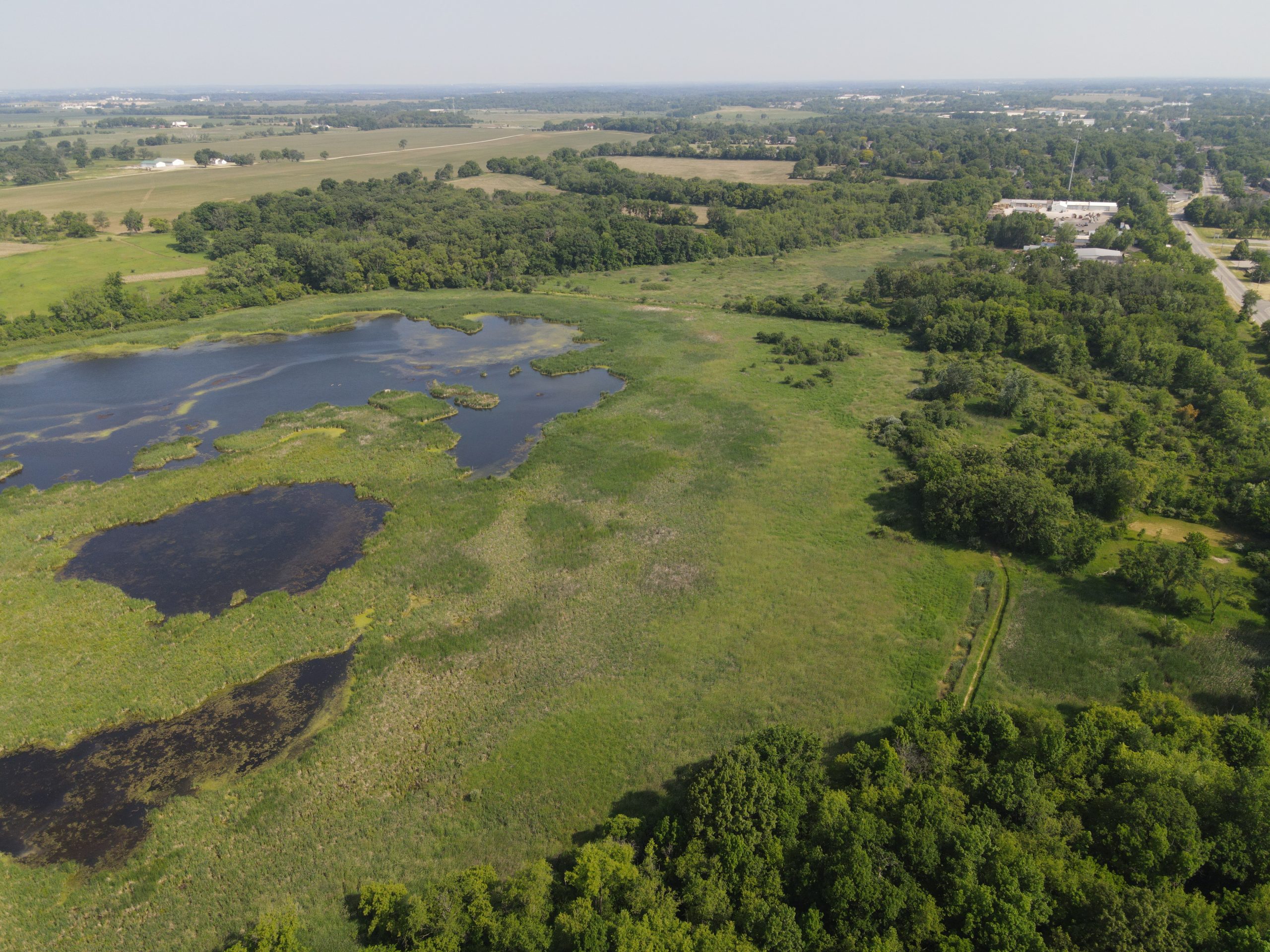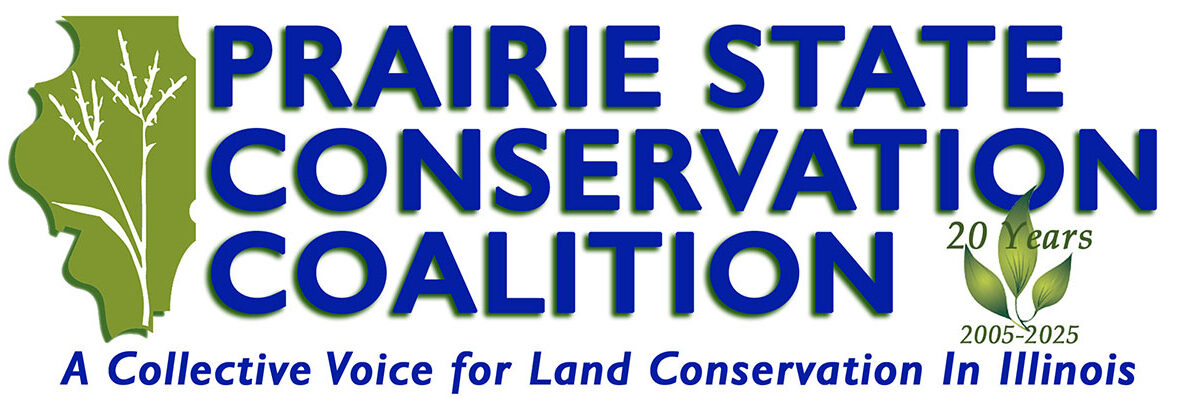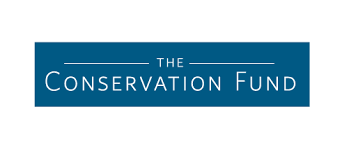Hackmatack acquires Tamarack Farms

Nearly 1,000 acres protected
Partnership-based Acquisition Accounts for Approximately 10% of Refuge Footprint
Creates Third Largest Conservation Landscape in the Chicago Region
Photo Courtesy of The Conservation Fund
Hackmatack National Wildlife Refuge’s largest regional acquisition in 28 years
The Conservation Fund, Illinois Audubon Society, and Openlands announced today the partnership’s acquisition of Tamarack Farms in Richmond, Illinois for Hackmatack National Wildlife Refuge (Hackmatack). Straddling the Illinois-Wisconsin border, the federally designated Refuge protects vital habitat for the region’s biodiversity while offering extensive recreational opportunities for the 12 million residents of the greater Chicago, Rockford, and Milwaukee metropolitan areas.
At 985 acres, Tamarack Farms is the largest single property located within Hackmatack’s approved boundary, where the average property size is only 63 acres. According to the Prairie State Conservation Coalition, which maintains a database of all conservation properties in Illinois, Tamarack Farms is the largest conservation acquisition in the Chicago region since the creation of Midewin National Tallgrass Prairie in 1996. Additionally, Tamarack Farms will connect several existing conservation areas, creating a continuous 5,600-acre macrosite — the third largest in the six-county metro region behind Midewin and the Palos Preserves of the Forest Preserves of Cook County.
“Since the Tamarack Farms property was under threat of development, protecting it has been a top conservation priority for decades. Through patient negotiations over the course of years, this once-in-a-generation opportunity has been realized,” said Emy Brawley, Illinois State Director for The Conservation Fund. “Thanks to our collaborative partnership, and steadfast leadership from advocates, local government, and our congressional delegations, Tamarack Farms will enable the U.S. Fish & Wildlife Service to dramatically expand public land access for residents and visitors of the region.”
Established in 2012 by then-Secretary of the Interior Ken Salazar, Hackmatack National Wildlife Refuge protects wildlife habitat within the Nippersink Creek watershed in McHenry County, Illinois and Walworth County, Wisconsin. As envisioned, Hackmatack aims to create an 11,200-acre natural landscape by connecting four conservation core areas with wildlife-friendly migration corridors through a combination of acquisitions and private land conservation agreements. A map of the Refuge’s existing land holdings is available here from the U.S. Fish & Wildlife Service (USFWS), the managing agency of the refuge.
National Wildlife Refuges serve joint purposes of biodiversity conservation, public recreation, and education. Hackmatack is also an urban wildlife refuge, a special designation within the National Wildlife Refuge system, which enhances its recreational and educational mission. When open to the public, recreational opportunities will include hiking and walking, canoeing and kayaking, birding and wildlife viewing, biking, and wintertime recreation, as well as volunteer stewardship events. The property will also provide unique public access opportunities via an adjacent rails-to-trails path that connects with Wisconsin to the north and the Grand Illinois Trail network to the south.
“High-quality public land is a boon to McHenry County, as it would be for other parts of the region with natural assets like Tamarack Farms. From the emergence of Hackmatack in 2005 as an idea, Openlands has championed, with partners, the value proposition of a National Wildlife Refuge right here in our own metro,” said Michael Davidson, President and CEO of Openlands. “McHenry County is already seeing results of accessible open space. Between 2021-2022, visitors to the county spent over $336 million, a 26% increase in spending from the previous year. Clearly, the economy benefits from our need to get outside and care for our physical and mental health. We hope this acquisition can lead to further investment in connecting our region’s natural lands.”
The acquisition of Tamarack Farms will further protect high-quality wildlife habitat on the property, including remnant oak woodland, habitat for nesting grassland birds and waterfowl, cold-water springs, a 70-acre open water wetland, and multiple feeder streams to the nearby Nippersink Creek, one of the highest aquatic quality streams in the region. Over 200 species of birds, 70 species of fish, 30 species of reptiles and amphibians, 35 species of mammals, and hundreds of plant species have been recorded within the refuge boundary.
“Large-scale conservation such as this project is critical to ensure species’ resiliency in the face of climate change, and Tamarack Farms will provide a natural sanctuary for both people and wildlife,” said Jo Fessett, Executive Director of Illinois Audubon Society. “This exceptional addition to the Refuge will not only create habitat for numerous threatened and endangered species of plants and wildlife, but also present the perfect opportunity to enhance public interaction and appreciation of nature.”
Tamarack Farms remains under an active farm lease and public access will be limited until the property is opened for recreation by USFWS.
The property was purchased from a willing private seller with the stated intention of adding it to Hackmatack National Wildlife Refuge, resulting in the protection of nearly 10% of the land within the Refuge’s approved boundary.
The acquisition was financially supported by The Conservation Fund, Illinois Audubon Society, and Openlands, with additional support from the Bobolink Foundation, James and Elizabeth Bramsen, Mr. and Mrs. Jonathan Hamill, Nancy Hamill Winter, the Illinois Clean Energy Community Foundation, and the McHenry County Conservation Foundation. The Conservation Fund and Openlands will hold the property in trust until it can be conveyed to the USFWS as funding from the federal Land and Water Conservation Fund becomes available.
“In many ways, acquisition of Tamarack Farms represents a ‘dream realized’ for a small group who first came together over two decades ago to advocate for its protection as part of the National Wildlife Refuge system,” said Steve Byers, Chair of Friends of Hackmatack National Wildlife Refuge. “Protection of Tamarack Farms, with its majestic oak woodlands, dynamic wetlands, and opportunities for prairie restoration, is a historic leap forward for the Refuge and brings it closer to its goal of 11,200 acres of protected land. It also demonstrates the power of dreams and of a shared vision with committed partners in building a landscape that benefits our natural world and the residents of the region alike.”
Those interested in experiencing the Refuge are encouraged to visit the Friends of Hackmatack National Wildlife Refuge website, hackmatacknwr.org, to learn about educational and volunteer opportunities, or to visit several of the USFWS or McHenry County Conservation District conservation areas within the Refuge boundary.



